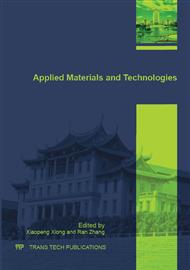p.85
p.90
p.97
p.101
p.107
p.112
p.117
p.122
p.127
Numerical Simulation of Polysilicon Chemical Vapor Deposition in Siemens Reactor
Abstract:
The Siemens CVD reactor should be refined when addressing the low energy consumption requirement for the production of solar grade polysilicon. The object of this paper is to investigate the heat transfer in Siemens reactor, which will provide the theoretical guidance for saving energy of polysilicon scale production. Based on Discrete Ordinates (DO) radiation model, an analysis is presented which studies the radiation exchange between the hot polysilicon rods and the cold reactor wall of four typical reactor configurations, especially the variation of the average power emitted per rod under various conditions of different rod diameter and wall emissivity. The results show that the energy consumption can be reduced by decreasing the emissivity of the reactor wall and enlarging the reactor capacity.
Info:
Periodical:
Pages:
107-111
Citation:
Online since:
November 2015
Authors:
Price:
Сopyright:
© 2015 Trans Tech Publications Ltd. All Rights Reserved
Share:
Citation:


